
Issue 042
October 2008
Scandinavia’s New Warriors
Britain’s shores are under attack from seeing a new kind of invader. A thousand years ago they wore helmets and conquered towns and villages across the country. Now they wear four-ounce gloves and do battle on events throughout the land. The Vikings are back, and you should be afraid.
A romantic’s view of Scandinavia conjures up images of many things: snow and ice, horned warriors, buxom blonde women and a race of people with a history of combat spanning more than a millennia.
A new chapter is being added to that history of combat, and where Vikings once sailed the seas of Europe and beyond to conquer foreign lands, now modern-day warriors travel to compete in cages and rings around the globe.
Nowhere more so is this the case than in Britain. After more than a thousand years, the English people are witnessing a return of the Norsemen, and as they did in the Dark and Middle Ages, they are proving more than formidable foes.
Almost every major event in the United Kingdom has seen a Scandinavian fighter step into it’s cage to inflict a very particular kind of violence and, as the sport continues to grow in the Nordic countries, the Neo-Vikings are conquering opponents in the USA and Japan too, often in terrifying fashion.
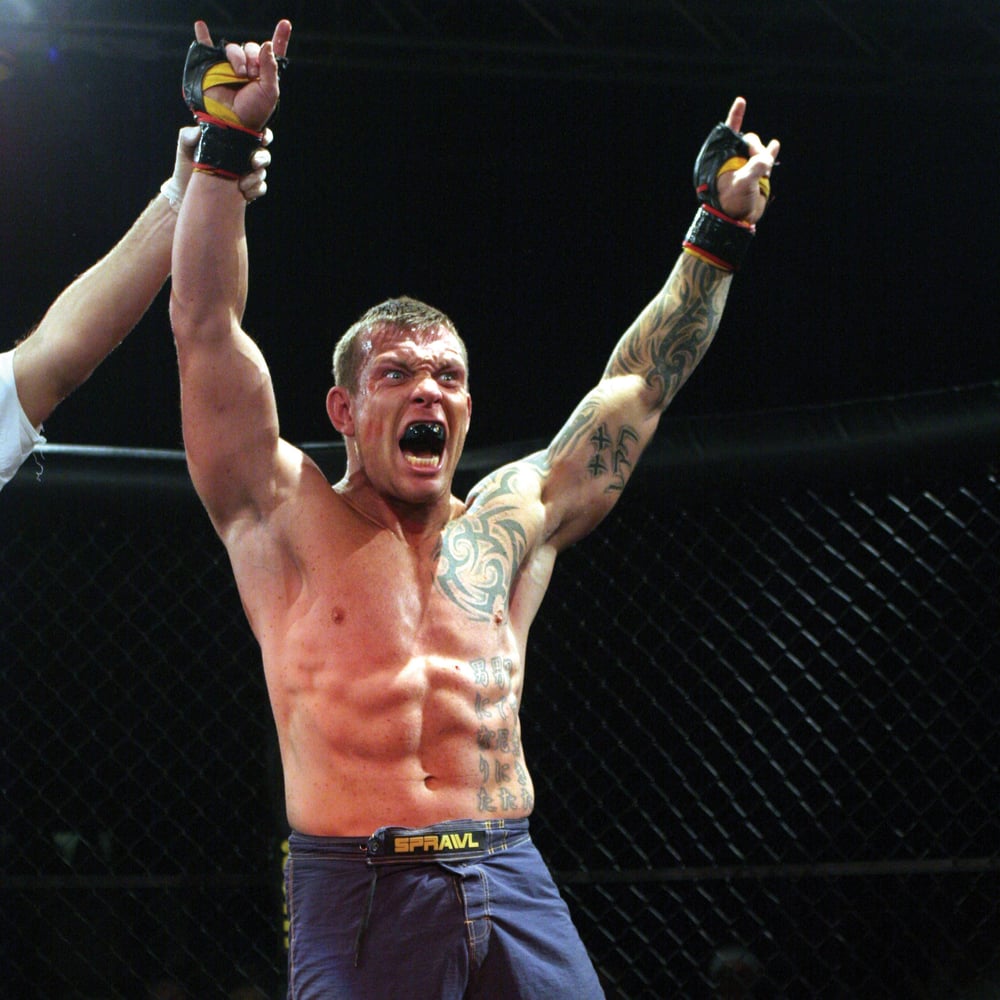
The Neo-Vikings
The modern Scandinavia is comprised of the countries Denmark, Sweden, Finland, Norway and Iceland. Each country has it’s own local scene, although this varies from the thriving (Sweden, Finland) to the suppressed (Norway, Iceland).
Complicated political regulation and a lack of public awareness mean that fighters from Norway have no choice but to travel, whereas Finland, Denmark and Sweden all have established circuits for both amateur and professional fighters. Over the last few years these countries have produced some remarkable fighters, including DREAM lightweight Grand Prix winner Joachim Hansen (Norway), UFC middleweight Martin Kampmann (Denmark), heavyweight fighter Jon Olav Einemo and more, but Scandinavian fighters are travelling in increasing numbers to take fights elsewhere.
I asked top Danish fighter Martin Kampmann why this was. “Back when I started fighting, if I wanted to fight professional I had to go over to England if I wanted to fight somewhat consistently. In Denmark there was maybe two shows a year, but England has a lot of shows and pretty regularly, almost every weekend I’d say. It was a great opportunity for me to go over there and get some experience.
“In MMA, Denmark is still a lot of years behind the US. It’s taking off, it’s growing and it’s getting a lot better. We have maybe ten events a year, something like that. When I started fighting, back then we didn’t have that many events. Even after I had my first pro fight I was still fighting amateur otherwise I wouldn’t be able to get fights. I wouldn’t get paid, I wanted to fight.
“Right now there are many more amateur and more pro MMA events going on in Demark, but of course if you want international recognition you have to travel to other countries.”
Tue K Trnka, editor of Danish MMA magazine Fighter, agrees. “They [the fighters] have to go abroad to fight, to get good fights. The level at the local events is pretty low if you’re a higher calibre fighter. Hansen, Einemo and such, they can’t fight here. Nobody would want to face Joachim Hansen, and no events could pay him that kind of money.”
It is not just the established fighters who have to travel to find competitive fights. Aspiring fighters often come to the UK throughout their career. Simeon Thoreson, the undefeated Norwegian welterweight who is tipped to be taking on Japanese opposition in DREAM sometime soon, explains why he must travel to the UK to compete.
“In Norway it is illegal to fight professional mixed martial arts. Even amateur Muay Thai and MMA is illegal too, so if you want to compete you have to go to Sweden or Denmark or Finland. But it takes longer to fly to Finland than England, plus it’s colder!”
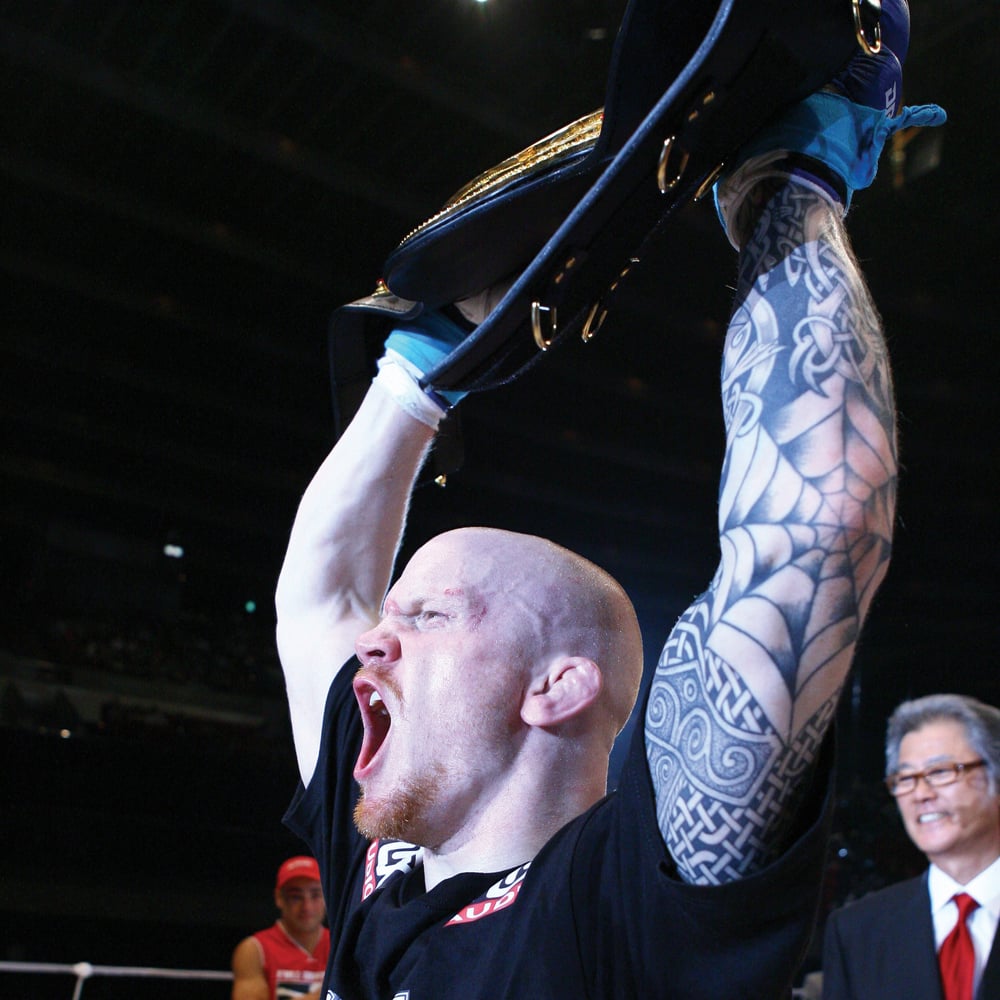
Local Activity
With dozens of fighters from Scandinavia making the trip across the
North Sea to find fights, you’d be forgiven for thinking that there was a complete lack of activity in their home countries. But with one notable exception, this isn’t true.
“It’s a little hard to tell, but Finland or Sweden is the biggest,” says Jon Olav Einemo. The 6’6” heavyweight from Norway is a teammate of Joachim ‘Hellboy’ Hansen, widely regarded as Scandinavia’s top fighter, and when not competing in Japan or Holland himself, trains promising fighters such as Thoresen. “Sweden is bigger because it’s a bigger country, you know? But I think that maybe the interest is higher in Finland, among the population, because it’s a much more violent society!” He laughs as he recounts this.
“They like to fight! I used to live in Finland and when the guys come first time to training they don’t want to train grappling or jiu-jitsu, they just want to do free-fight. They train two months and then go to fight. It’s a hard culture for fighting!”
Einemo, Hansen et al are unable to fight at home, even if they wanted to. With almost all combat sports outlawed by the Norwegian government, they were forced to travel to advance their career, and Finland was the first destination for both.
Finland was home to Europe’s most infamous event, though it flew under the radar for many fans outside of the Nordic lands. Until 2004, Finn Fight used ‘old-school’ no holds barred rules, a bare-knuckle tournament (later with ‘paper-thin’ gloves) and rules that permitted headbutts and stomps. Now a respected event more in line with standardised rules, it was the launchpad for many a Scandinavian fighter.
Now aspiring fighters are able to gain experience via a network of amateur events, thanks to the work of people such as Tuomas Murdoch. “We have a unique and very well-functioning amateur circuit in Finland. It started in 2004 with the Finnish MMA Federation. It was devised from old shootfighting rules, with influences from C-class Shooto,” he says. “Every three weeks we have an amateur event. The total amount of competitors to compete in the last three years numbers over 300. Sweden have a similar structure with the Shoot Fighting federation,” he continued.
Murdoch echoes Einemo’s sentiments that the Finns love to fight.
“Finns have a mentality, an attitude here, it makes it very easy for people to compete. They don’t feel they have to train for five years before they make their debut. At the end of the 90s, beginning of 2000s, Finns were known as brawlers. The reason why is that of all the Finns who thought the guys who fought were ‘tough guy’ types. They weren’t technical MMA fighters.”
This has all changed though, as MMA fighters from Scandinavia are ranked among some of the most technical in the world. “In Finland we have a long tradition in BJJ, I think the Nordic countries have been pioneering that,” says Murdoch. “The fighters who have risen to the international level all have a background in BJJ (Brazilian jiu-jitsu). The Swedes are a little bit careful
about going to fight. You know if a Swede has two fights he will have trained for many years.”
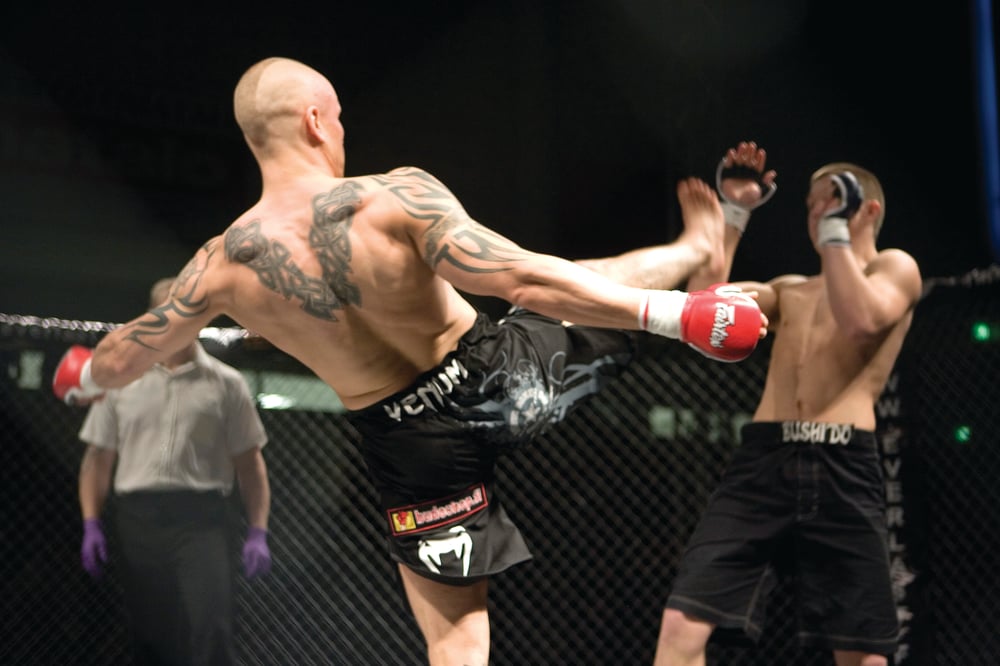
Why so technical?
I asked Simeon, a highly proficient grappler, why there were so many technical fighters coming out of Scandinavia. “A Scandinavian fighter does not need to fight, he does so out of interest, or passion, or perhaps a hobby. Usually when you do that you have a more technical aspect.
“The grappling in Scandinavia is really top. We have really good trainers, we have high-level grappling. You have world-class grapplers you can hook up with and train for free. They don’t charge you some insanely huge amount for lessons.”
“You’ve got a lot of technical fighters coming out of Scandinavia because they are fans,” says Trnka. “I think that’s why you see the fighters coming out of Scandinavia are all technical.” The technicality extends to the fans also, as Trnka points out. “I’ve been to events around the world, and the Swedish crowd is really special. You have technical ground battles, and the crowd is really quiet, and when one guy passes the guard they explode, applauding the guy and such. They really appreciate the details, the fans have a deep knowledge, and that transcends into the fighters as well.”
Although the grappling in Scandinavia is among the best in Europe, it is sometimes necessary for fighters to travel to train as well as fight. Martin Kampmann now lives in Las Vegas and trains at Xtreme Couture. His reasons for moving were simple: “I can’t get the sparring partners back home that I need to compete at this level. I still go back home to Denmark even though I live out here now. I train with people and I show what I’ve learned over here and that helps develop the MMA scene there.
“I think you need to go out and train, before I went to the USA I was out in Thailand training Muay Thai and in Brazil training jiu-jitsu. I try to get out and learn from as many people as possible.”
Indeed, Scandinavian fighters are travelling the globe to improve their skills as well as compete, with one insider describing Xtreme Couture as looking like “a Viking ship with all the damned Danish guys Martin is bringing over”. Swedish fighter David Bielkheden spent a year in Brazil training with the Brazilian Top Team, and many others have followed in his steps in seeking out new training.
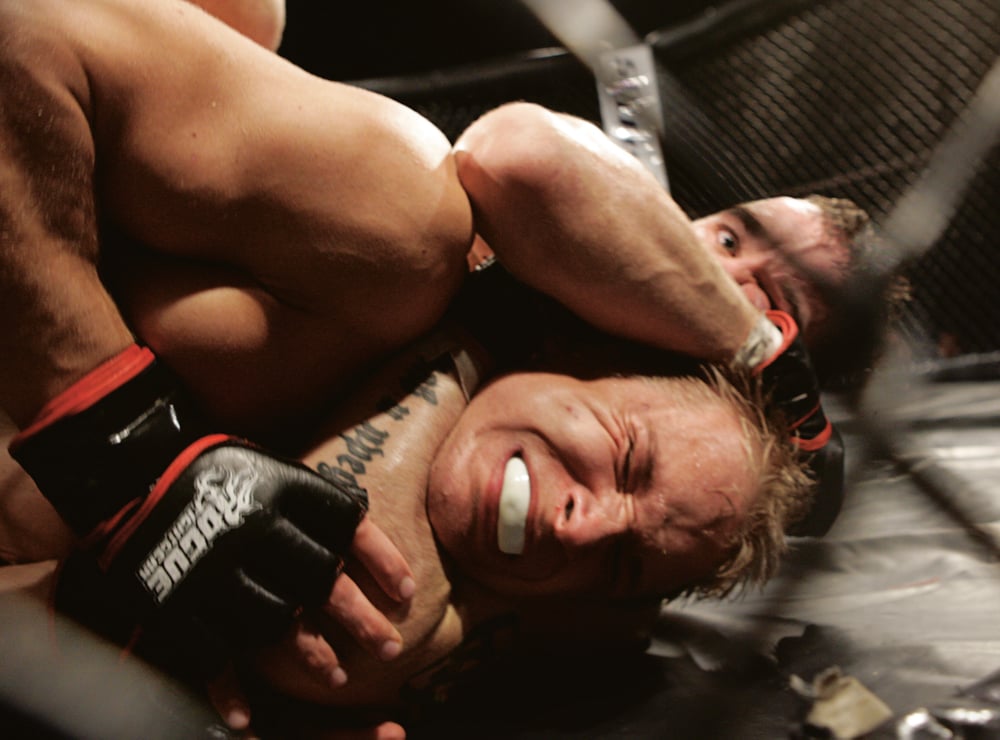
The Future
As the Scandinavians develop their skills in the gym and showcase them on both domestic events and international events, there is one barrier that everyone I spoke with believes is stopping them from reaching their full potential: a major event.
Though Sweden, Finland and Denmark all have multiple promotions operating, none match the level of success seen elsewhere in Europe or America. Soccer rules as the sport of choice in Denmark, in Finland “everyone is crazy about ice hockey,” says Tuomas.
“I have a difficulty seeing it really explode here,” says Tue, referring to MMA in Denmark. “I think it could be more popular, but I don’t see it becoming huge, like an event gathering 10,000 viewers, in the next few years or so. I don’t know if it’s a cultural thing, it’s the same thing with kickboxing and Muay Thai. Boxing has been a really strong sport here in Denmark for many, many years. We’ve got really good boxers here, and for a small country like Denmark, if you go through the records of professional boxers for the last 20 years and see how many European champions there are, it’s quite extraordinary. There is a big fanbase for boxing, but MMA, I don’t know how big it will be.”
Tuomas points to an interesting development in Finland that has had an impact on the general public. “In Sweden they’ve had MMA on TV before, but in Finland we haven’t had that exposure on the subject. They began to premier The Ultimate Fighter on TV, and this has peaked the interest in MMA. I have noticed young guys who have nothing to do with MMA are talking about TUF. It’s starting to lift it’s head, regular people are starting to watch the sport.” The fans aren’t just watching either, as in a Helsinki-based gym 150 people have signed up to the next beginner’s course since the airing of TUF.
All the Scandinavian fighters I spoke with during my research said the same thing: that they would continue to travel and fight across the world. Most laughed at the suggestion of it being a second Viking invasion, but Simeon summed it up well when laying out his plans for the future. “I will go as far as I can. I like this, and I love competing. I will try to make this a real life and work after. When I get paid better, right now it’s nothing! It’s good fun…”
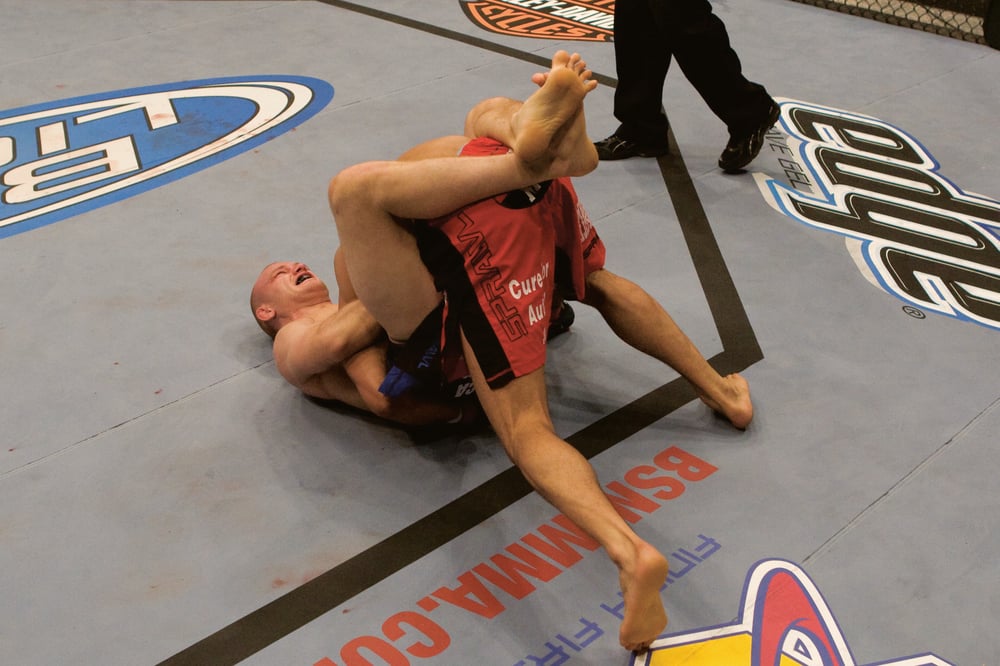
For Scandinavian fighters, fighting isn’t about survival. It’s about proving how good they are, and at the rate the sport is growing, expect to see many more Vikings upon these shores in the future.
Scandinavia at a Glance
Sweden
The largest country in Scandinavia with the highest numbers of gyms and practitioners, Sweden is home to events such as Superior Challenge and The Zone (formerly known as European Vale Tudo). Home to some of the best grapplers in Europe.
Denmark
Though the smallest of all Scandinavian countries, Denmark has events such as Adrenaline, FighterGalla and EuroMMA. Danish fighters are known as impressive strikers.
Finland
Though they do not have as high-profile fighters as other countries, Finland has a thriving local scene with pro events such as ‘The Cage’, Shooto, Finn Fight, and regular amateur competitions.
Norway
No professional combat sports are permitted in Norway, with only amateur boxing and martial arts such as karate and grappling allowed by local laws. All Norwegian fighters must travel in order to compete in MMA.
Iceland
Only two fighters have been produced by Iceland’s sole MMA gym, Mjolnir, but both impressed on events in England and Ireland. Slim to no chance of events ever taking place due to lack of numbers and government opposition.
Scandinavian Fighters
Get acquainted with the best of Scandinavia with this rundown.
Norway
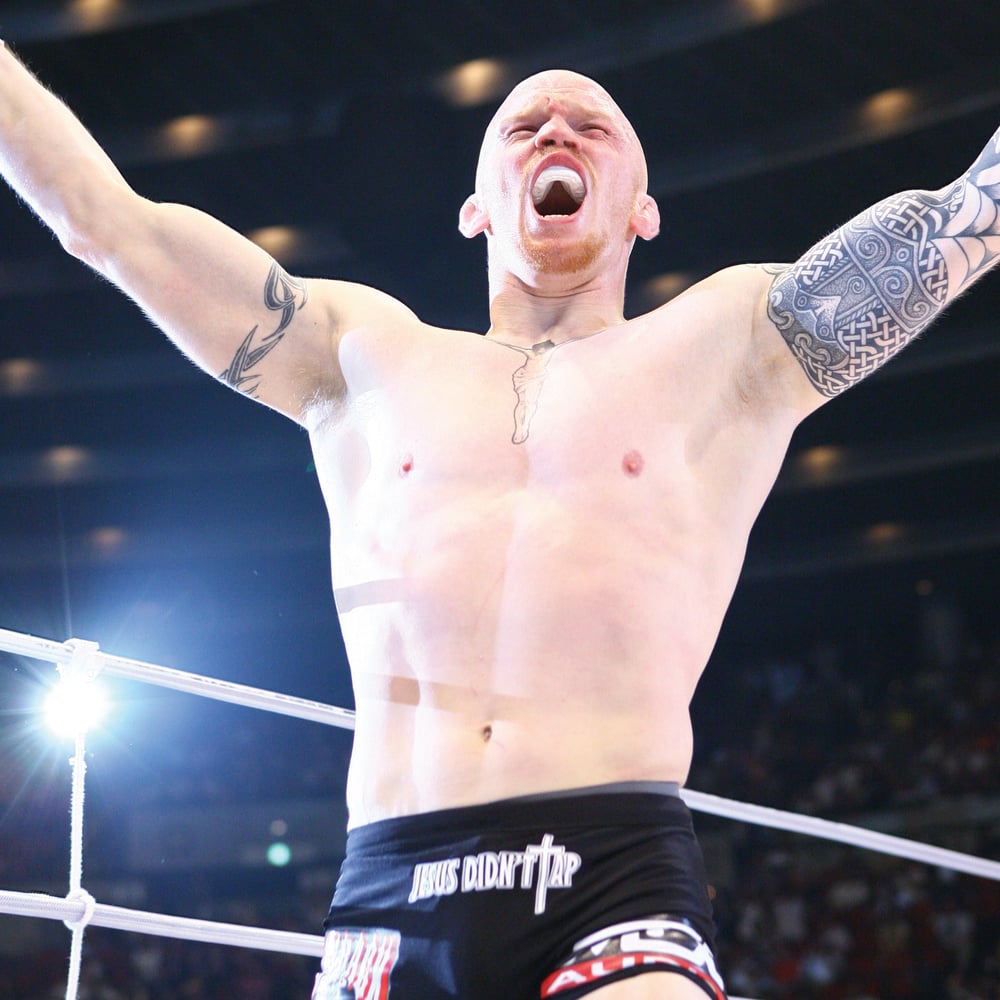
Joachim Hansen (Lightweight, 19-7-1)
A ferocious striker and precise grappler, Hansen is on a tear in Japan having just won the DREAM Grand Prix.
Jon Olav Einemo (Heavyweight, 6-1-0)
A phenomenal grappler, this giant of a man moves like a lightweight. His only loss was a decision to Fabricio Werdum in Pride.
Simeon Thoreson (Welterweight, 9-0-0)
Undefeated, a super-slick grappler with a 90% submission rate.
Sweden
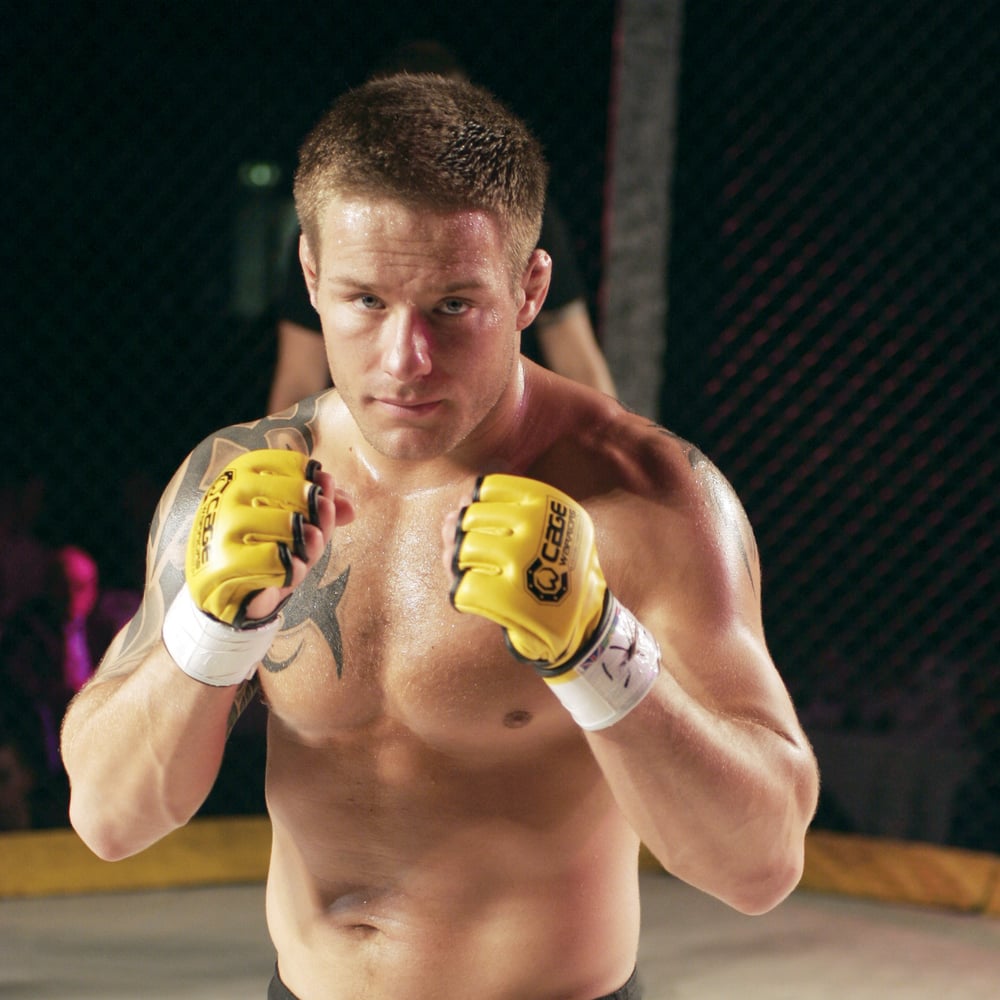
David Biekheden (Welterweight,
12-6-0)
Strong ground ‘n pounder who has fought in the UFC, Pride and Shooto. Returns in October on UFC 89.
Diego Gonzalez (Welterweight, 10-3-0)
Strong submission fighter from Stockholm currently on a five-fight win streak.
Per Eklund (Lightweight, 13-3-1)
Capable fighter who disappointed in his last performance against Sam Stout. Has trained with Dan Henderson at Team Quest.
Finland
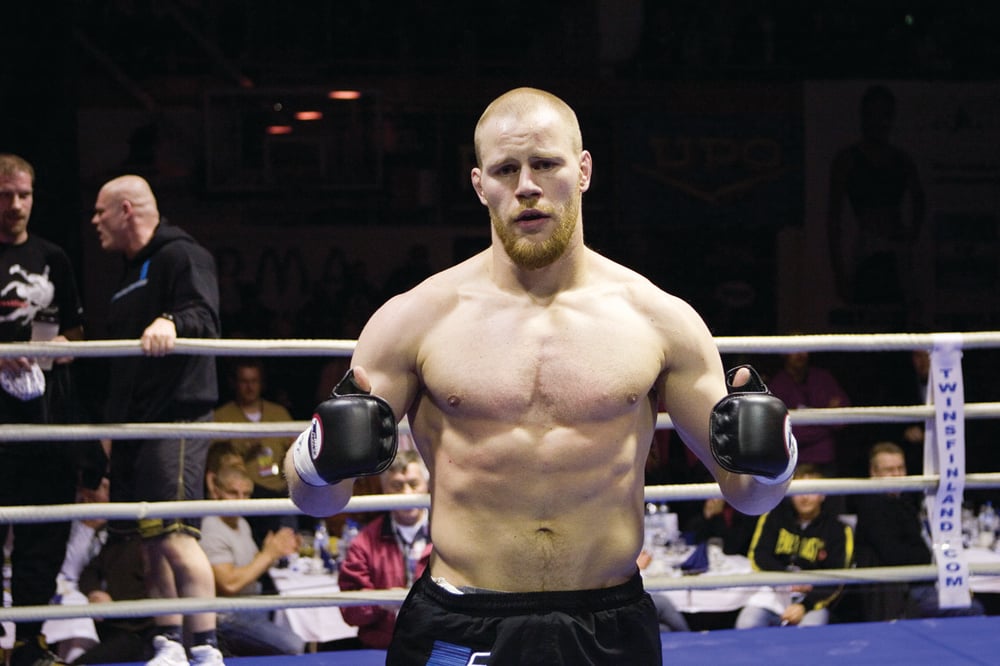
Mikko Rupponen (Light heavyweight, 16-5-2)
Europe’s top light heavyweight, a rough and ready fighter from Helsinki who loves to pound opponents out on the mat.
Sauli Heilimo (Welterweight, 12-3-1)
An impressive grappler and veteran of the Scandinavian scene at only 27 years of age.
Denmark

Martin Kampmann (Middleweight, 13-1-0)
One of Europe’s top middleweights, he hasn’t lost since 2004 and has four consecutive wins in the UFC.
Kenneth Rosfort (Welterweight, 10-3-0)
Promising fighter out of Copenhagen who combines good ground skills with pin-point striking.
Iceland
Gunnar Nelson (Welterweight, 4-0-0)
A BJJ brown belt at only 19 years of age, recently returned from two months of training with BJ Penn and Urijah Faber.
Credits: FEG, Hywel Teague, Antti Latva-Kyyny, Josh Hedges / Zuffa LLC
...











